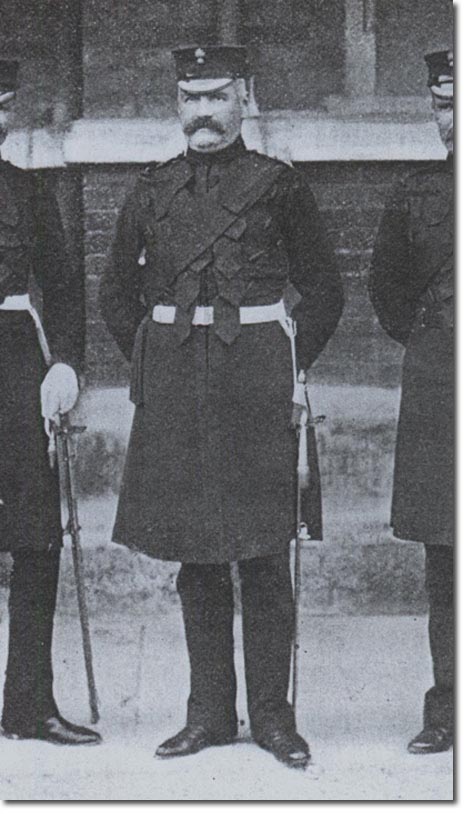|
|

 |
|
Eyre Macdonnell Stewart Crabbe was born in 1852, the son of Colonel Eyre John Crabbe who fought in the 74th Highlanders in the Peninsula and commanded them from 1841 to 1846. His mother was Elmina Stewart from a Jamaica planter family. Eyre junior was educated at Harrow and joined the Grenadier Guards in 1871. He was one of the first officers to benefit from the Cardwell reforms that abolished the purchase of commissions in 1871. He served in Ireland and met and married Emily Constance Jameson from the Dublin distilling family. He was an accomplished musketry instructor in the regiment and in 1882 went out with them to Egypt where he was transport officer and helped organise the logistical operations against Alexandria. He was also one of those Grenadiers chosen for the Camel Corps in the Gordon Relief Operation, fighting at Abu Klea.
In 1898 he was promoted to command the 3rd Battalion and led them in the Boer War. At the battle of Belmont on 23 Nov 1899 he led his battalion in the attack on Gun Hill which was unfortunately the wrong hill. Crabbe was not to blame, the map was faulty and the finger of blame was pointed at General Colville. Crabbe was wounded in the attack but was able to attend the battle of Magersfontein on 11 December. He escorted Piet Cronje into captivity, and commented in a letter home: "It is a curious idea taking one's wife & family with one to the wars & must be inconvenient for many reasons but it is rather the fashion in these parts. Living in a river bed & being shot at every day seems an odd fancy for a lady." He was wounded again on 23 Mar 1900 when he led a 'reckless' foraging party that was ambushed at Karee Siding. But he was back in action at the end of April and was observed and commented on by Arthur Conan Doyle: "Here is another man worth noting. You could not help noting him if you tried. A burly, broad-shouldered man with a full, square, black beard over his chest, his arm in a sling, his bearing a medieval knight-errant. It is Crabbe, of the Grenadier Guards." He commanded a column in 1901 and fought actions against Fouche and Kritzinger, and defeated Van der Merwe and Hildebrand. After the war he held staff posts at Aldershot but died suddenly of a heart attack soon after arriving for work on 8 Mar 1905. He was 52 and a widower when he died, leaving 4 sons and 4 daughters. One son, Tempest, served in the Grenadiers and was killed at Loos in 1915, and another became a vice admiral having commanded a ship at the battle of Jutland. The photo is taken from the Army and Navy Illustrated 1899, part of an article on the 3rd Battalion before they left for South Africa. |
Regimental details | Commanding Officers
Armed Forces | Art and Culture | Articles | Biographies | Colonies | Discussion | Glossary | Home | Library | Links | Map Room | Sources and Media | Science and Technology | Search | Student Zone | Timelines | TV & Film | Wargames